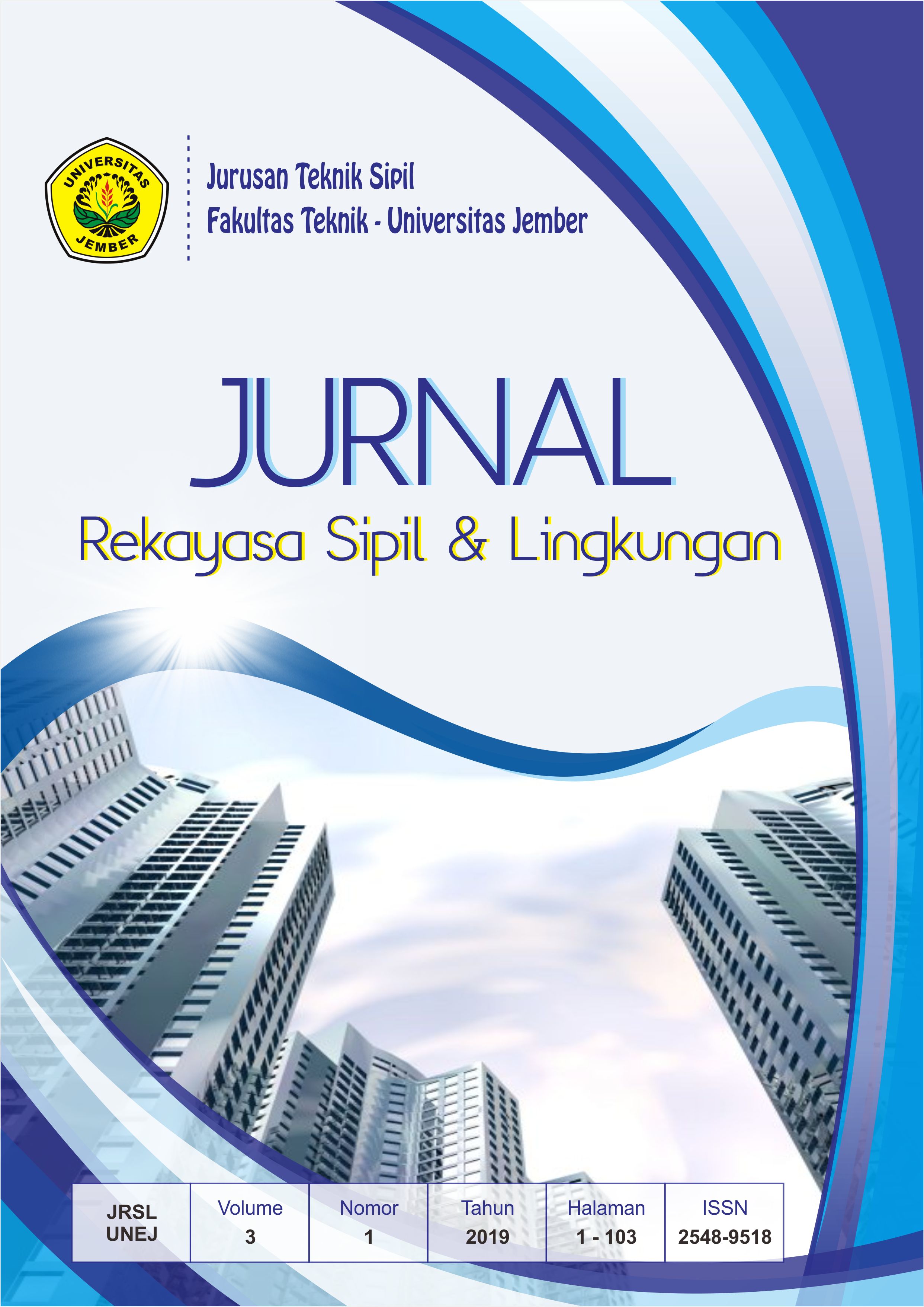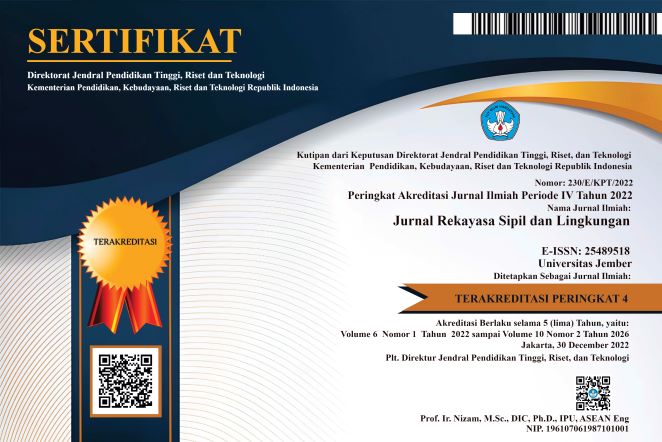EVALUATION FINAL SETTLEMENT IN FIED UING OBSERVATIONAL METHOD: ASAOKA AND HYPERBOLIC IN PPKA PROJECT SECTION 2 PALEMBANG SOUTH SUMATRA
Evaluasi Penurunan Akhir Tanah Di Lapangan Menggunakan Metode Observasional: Asaoka Dan Hiperbolik Pada Proyek PPKA Seksi 2 Palembang Sumatra Selatan
Abstract
In the construction of the Trans Sumatra Toll Road, the existing land that will be used as a foundation belongs to the soft soil category. This is because the original soil to be built by the toll road is swamps. The soil improvement method used in PPKA section 2 is Vacuum Consolidation. In this study, a geotechnical instrument evaluation was carried out using the Settlement Plate to evaluate the actual settlement, then calculate the final settlement prediction with the Asaoka and Hyperbolic observation methods. Then from the monitoring data, the prediction of the final settlement was calculated using the Asaoka and hyperbolic observation methods, calculated the value of the degree of consolidation from each method. So that the results of the calculation can be concluded in the form of the superiority of each method used as consideration for further planning. The results obtained in this study are the actual settlement with theoretical and settlement predictions along with the comparison of the two observation methods. From the average value of the degree of consolidation produced also in the percentage of 98.68% while the hyperbolic is 99.35%. The calculation of soil subsidence using the Asaoka method is more same with the field (actual). Because the data used for the Asaoka comes from all monitoring data on the field settlement plate.
Pada pembangunan jalan Tol Trans Sumatra, tanah eksisting yang akan dijadikan pondasi tergolong dalam kategori tanah lunak. Hal itu dikarenkan tanah asli yang akan dibangun jalan tol merupakan rawa-rawa. Metode perbaikan tanah yang digunakan di PPKA seksi 2 adalah Vacuum Consolidation. Dalam kajian ini, dilakukan evaluasi instrumen geoteknik menggunakan Settlement Plate untuk mengevaluasi penurunan aktual, kemudian menghitung prediksi penurunan akhir (final settlement) dengan metode observasi Asaoka dan Hiperbolik. Kemudian dari data monitoring dihitung besar prediksi penurunan akhir tanah menggunakan metode observasi asaoka dan hiperbolik, dihitung nilai derajat konsolidasi dari setiap metode. Sehingga dari hasil perhitungan didapat kesimpulan berupa keunggulan setiap metode yang digunakan sebagai pertimbangan untuk perencanaan lanjutan. Hasil yang diperoleh dalam kajian ini adalah besar penurunan aktual dengan teoritis dan prediksi settlement beserta mengetahui perbandingan dari kedua metode observasi. Dari nilai rerata derajat konsolidasi yang dihasilkan juga pada asaoka sebesar 98,68% sedangkan pada hiperbolik sebesar 99,35%. Perhitungan penurunan tanah menggunakan metode asaoka lebih sesuai dengan lapangan (aktual). Dikarenakan data yang digunakan untuk asaoka berasal dari semua data monitoring settlement plate lapangan.






